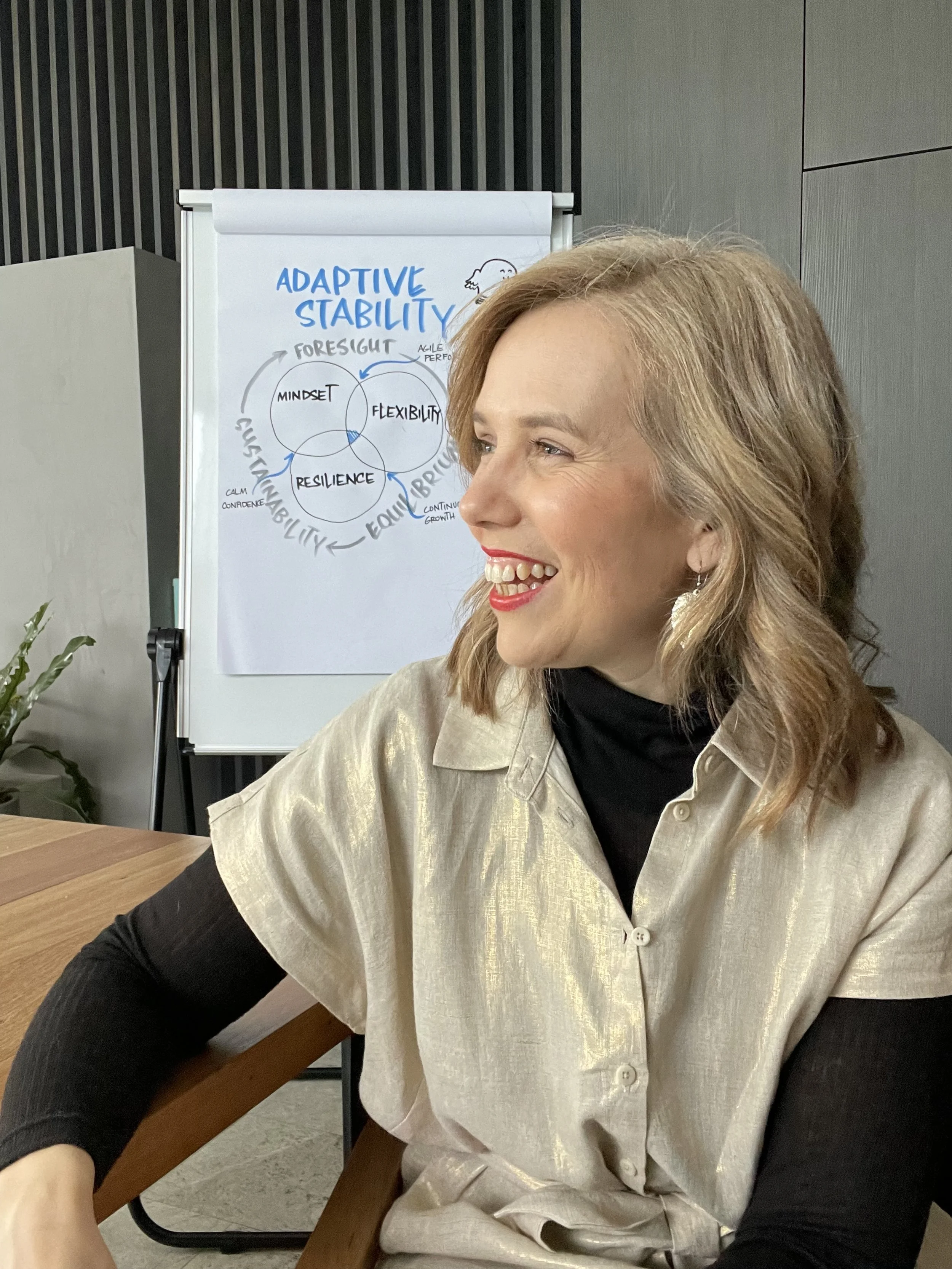Own Your Voice: How to Lead with Confidence Without the Ego
Practical tools to turn self-doubt into leadership presence
By Suzie Thoraval
“She remembered who she was and the game changed.”
The barrier that’s hiding in plain sight
Across the boardroom, in facilitations and coaching sessions, I see a repeating theme. The leaders I work with aren’t short on capability. They’ve done the work. They know their stuff. They’ve earned their seat. But what’s holding them back isn’t competence — it’s confidence.
I hear it all the time:
“I knew the answer, but I didn’t want to speak over others.”
“I worried that if I came in too strong, I’d be seen as pushy.”
What’s happening here isn’t a lack of skill. It’s a hesitation to trust their voice. And that hesitation becomes the invisible barrier between them and their full potential - impactful leadership.
But here’s the shift: when a leader starts backing themselves — even just a little — sharing one more idea, backing one decision, or speaking with more conviction - their presence shifts. Others start to notice and respond differently. That feedback loop builds confidence further. What may have been perceived as a deficit of skill was really a deficit of belief.
Why confidence matters for adaptive stability
When I talk with leaders about adaptive stability—the ability to stay steady in uncertainty through mindset, flexibility, and resilience—confidence is often a background issue.
Yet, it is the thread that holds these three pillars together. Without confidence, mindset wavers, flexibility feels unsafe, and resilience falters. With it, leaders step forward with clarity, conviction, and calm.
I’m reminded of something Louise Mahler explores in her book on Gravitas: confidence creates presence. It’s not just what you say, but how you show up—the resonance in your voice, the way you carry yourself, and the belief that you belong in the room.
Gravitas is not about dominance, but about grounding. And grounding is exactly what leaders need when everything around them is shifting.
The cost of cutting tall poppies
Let’s call out the cultural backdrop. In Australia, we’ve been taught to shrink ourselves. “Don’t get too big for your boots.” “Play it safe.” But safety rarely breeds innovation. And when we confuse confidence with arrogance, we lose out — not just as individuals, but as teams and organisations.
Tall poppy syndrome doesn’t just cut down individuals — it limits outcomes.
Meanwhile, research consistently shows that confidence boosts performance. It drives action, expands influence, and builds trust. Psychologists call it the “confidence–competence loop”: when we believe we can succeed, we’re more likely to take action, and those actions build success, which reinforces confidence. It’s a cycle that accelerates growth. On the other hand, when confidence is low, leaders under-play their strengths, avoid risks, and miss out on opportunities to grow.
Harvard psychologist Amy Cuddy found that when leaders project confidence (even before they “feel” it), they’re more likely to be hired, promoted, and followed. Presence leads to power — not the other way around.
Confidence: the bridge between potential and impact
Picture your leadership like a suspension bridge. On one side: everything you’ve worked for — skills, knowledge, experience. On the other: your influence, your outcomes, your impact.
Confidence is the bridge that carries your ability into the world. Without it, the bridge shakes. You hesitate. Others hesitate with you.
With it? You walk steady. And others follow.
That’s the foundation of adaptive stability: calm presence, decisive action, and the confidence to hold both — even in high-pressure environments.
Rosa Parks: quiet confidence that shifted a nation
We often associate confidence with loud voices and big personalities. But history reminds us otherwise.
In 1955, Rosa Parks made a decision that helped reshape a nation — by refusing to give up her seat for a white passenger on a Montgomery bus. Hers wasn’t a flashy act. It was grounded, principled, and rooted in unwavering self-respect.
That quiet confidence became a turning point in the U.S. civil rights movement. It sparked the Montgomery Bus Boycott, a mass protest that lasted more than a year and helped to launch the broader civil rights movement, supported by a US Supreme Court ruling that declared segregation on the bus system was unconstitutional. Parks didn’t need to shout. She simply refused to move — and moved millions instead.
Parks’ inspirational act shows, you don’t have to be the loudest voice in the room, you just have to have the confidence to be centred enough to stand (or sit) in your truth — especially when it counts.
Gravitas: The physical language of confidence
Confidence doesn’t live only in the mind. As Louise Mahler teaches, it’s also in how you carry yourself. Here’s how to practise it:
Body: Stand tall. Open your chest. Feet firm. Let your posture do some of the talking. Breath: Ground your nerves by breathing from the diaphragm to steady the nerves and project calm. Voice: Let your voice resonate from the chest, not the throat. Warmth and depth convey confidence more than volume ever can.
These simple physical adjustments change how leaders feel on the inside and how they are received on the outside. These aren’t stage tricks. They’re leadership tools. Physical presence speaks before words do — and often more convincingly.
Confidence habits: build the bridge, one step at a time
To strengthen your confidence, don’t wait for the big moment. Build small habits every day that reinforce belief and visibility.
Take one risk every week — Speak up. Back your decision. Step forward and claim the space you’d usually give away.
Practise physical presence daily — Try Mahler’s body–breath–voice sequence before meetings.
Challenge the self-censor — Ask yourself: Is this really arrogance, or am I just owning my strengths and the value I bring?
Collect the evidence — Write down three moments a week where you acted with confidence. Seeing proof helps rewire your self- belief.
Ask yourself:
Where are you underplaying your strengths out of fear of how it might be perceived?
What would shift if you backed your voice — even 5% more — this week?
How would your leadership presence shift if you showed up with more gravitas in your body, breath, and voice?
Unlock what's already within
To bring out your confidence is not to become full of yourself. It’s the bridge that turns ability into impact. It anchors your mindset, steadies your breath, and transforms your voice from hesitant to assured.
Without it, potential stays locked inside. With it, you carry your strengths across uncertainty, anchoring mindset, flexibility, and resilience.
As a leader, your job is not to chase applause. It’s to carry your expertise — clearly, calmly, and decisively — across the bridge of confidence.
Where in your leadership do you need to stop waiting for permission — and start walking across the bridge of confidence towards the greater impact you know you can have?

